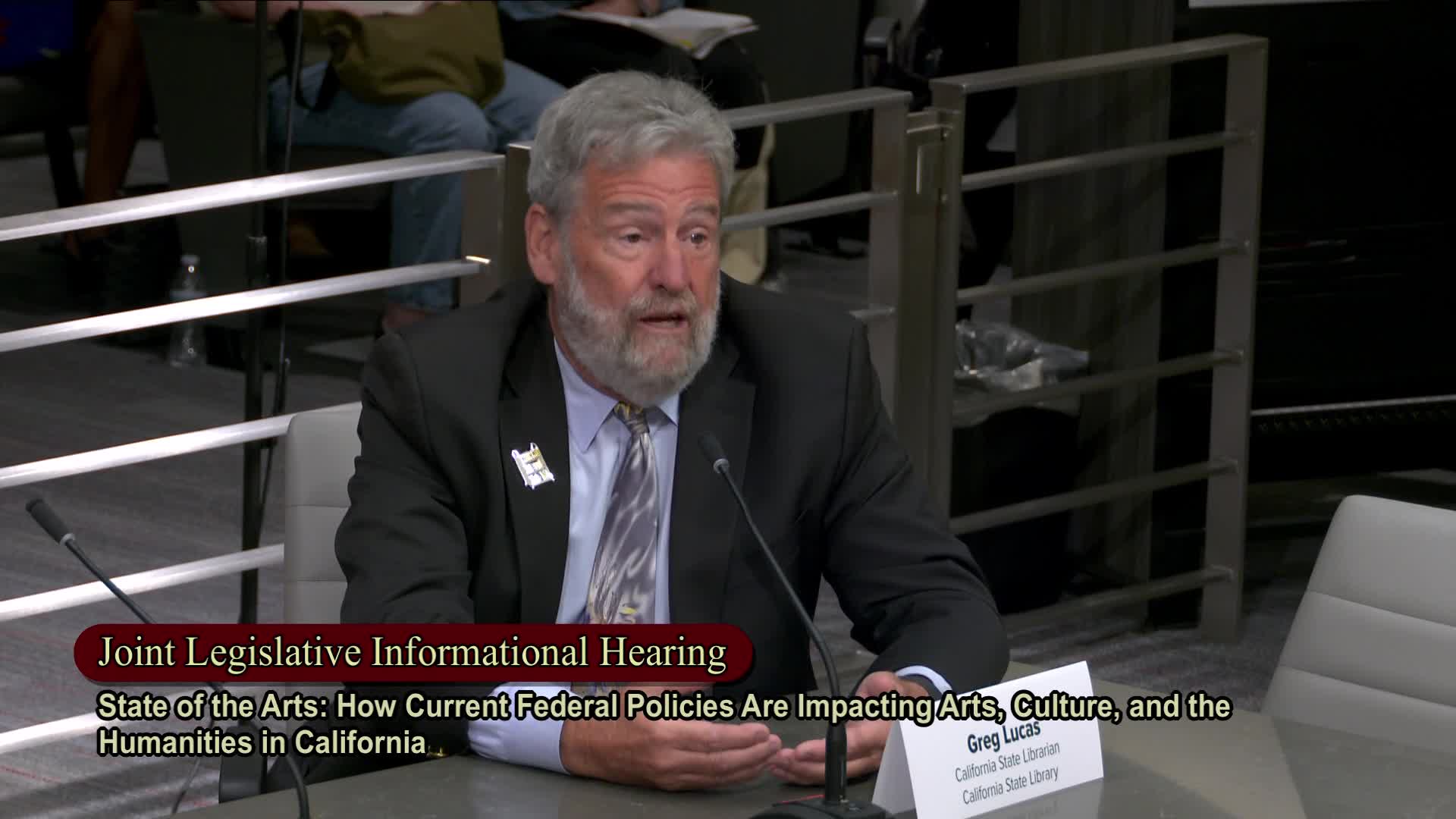California Arts Council seeks funds amid federal budget cuts and program terminations
May 14, 2025 | California State Senate, Senate, Legislative, California
This article was created by AI summarizing key points discussed. AI makes mistakes, so for full details and context, please refer to the video of the full meeting. Please report any errors so we can fix them. Report an error »

In a pivotal meeting held by the California State Senate's Joint Committee on the Arts and the Assembly Arts, Entertainment, Sports, and Tourism Committee, discussions centered around the future of arts funding in the state, highlighting both challenges and opportunities. The atmosphere was charged with urgency as representatives from various arts organizations shared their concerns about recent federal budget proposals that threaten the very foundation of arts funding.
Danielle Purcell, the director of the California Arts Council (CAC), opened the session by expressing gratitude for the partnership with local arts organizations and emphasizing the importance of arts funding for communities across California. She noted that the CAC has been a steadfast supporter of the arts for nearly 50 years, serving as the primary statewide funder. However, the recent announcement from the White House proposing the elimination of the National Endowment for the Arts (NEA), the National Endowment for the Humanities (NEH), and the Institute of Museum and Library Services (IMLS) has raised alarms.
Purcell detailed the precarious financial situation faced by the CAC, which recently experienced a significant budget shortfall. Just a week prior, California's expected $15 million in federal funding had been canceled, leaving a $3.4 million gap in the current fiscal year. Fortunately, after swift action, a portion of the funding was restored, but the future remains uncertain, with only half of the anticipated funds for the next fiscal year secured.
The meeting underscored the critical role that arts funding plays in supporting local economies and fostering community connections. Purcell highlighted that the NEA is the largest single funder of the arts in the United States, and any disruption to its grants would have far-reaching consequences, particularly for rural and low-income communities that lack access to alternative funding sources.
As the session progressed, Purcell called for collaboration and support from state lawmakers to ensure that California can access federal funds and maintain its commitment to the arts. She emphasized the need for a robust support system for cultural organizations, especially in light of potential federal cuts.
The discussions at this meeting reflect a broader concern about the sustainability of arts funding in California and the vital role it plays in enriching communities. As the state navigates these challenges, the commitment to fostering creativity and cultural engagement remains a priority, with hopes that state-level initiatives can fill the gaps left by federal uncertainties. The outcome of this meeting could shape the future of the arts in California, making it a critical moment for stakeholders across the state.
Danielle Purcell, the director of the California Arts Council (CAC), opened the session by expressing gratitude for the partnership with local arts organizations and emphasizing the importance of arts funding for communities across California. She noted that the CAC has been a steadfast supporter of the arts for nearly 50 years, serving as the primary statewide funder. However, the recent announcement from the White House proposing the elimination of the National Endowment for the Arts (NEA), the National Endowment for the Humanities (NEH), and the Institute of Museum and Library Services (IMLS) has raised alarms.
Purcell detailed the precarious financial situation faced by the CAC, which recently experienced a significant budget shortfall. Just a week prior, California's expected $15 million in federal funding had been canceled, leaving a $3.4 million gap in the current fiscal year. Fortunately, after swift action, a portion of the funding was restored, but the future remains uncertain, with only half of the anticipated funds for the next fiscal year secured.
The meeting underscored the critical role that arts funding plays in supporting local economies and fostering community connections. Purcell highlighted that the NEA is the largest single funder of the arts in the United States, and any disruption to its grants would have far-reaching consequences, particularly for rural and low-income communities that lack access to alternative funding sources.
As the session progressed, Purcell called for collaboration and support from state lawmakers to ensure that California can access federal funds and maintain its commitment to the arts. She emphasized the need for a robust support system for cultural organizations, especially in light of potential federal cuts.
The discussions at this meeting reflect a broader concern about the sustainability of arts funding in California and the vital role it plays in enriching communities. As the state navigates these challenges, the commitment to fostering creativity and cultural engagement remains a priority, with hopes that state-level initiatives can fill the gaps left by federal uncertainties. The outcome of this meeting could shape the future of the arts in California, making it a critical moment for stakeholders across the state.
View full meeting
This article is based on a recent meeting—watch the full video and explore the complete transcript for deeper insights into the discussion.
View full meeting
